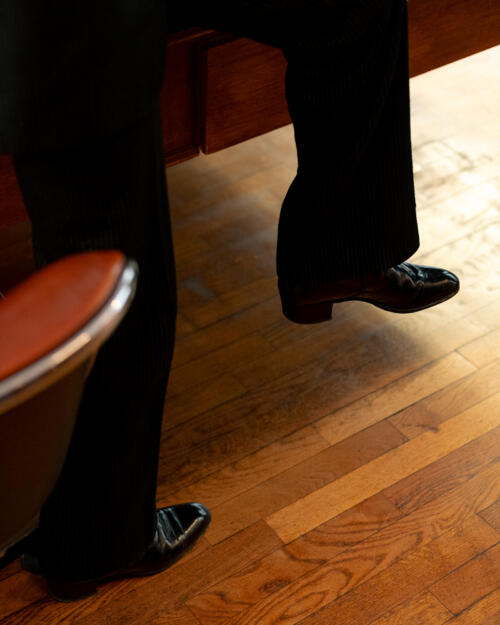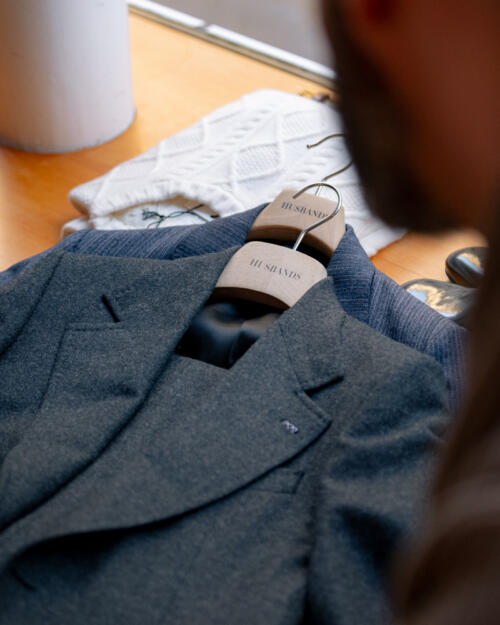
Husbands in Paris makes quality menswear – tailoring and related clothing – in a particular seventies-influenced style that has remained impressively consistent over the past dozen years.
The suits aren’t usually my style, but the fabrics are consistently great – high quality original developments, distinctive yet wearable – and a few friends have jackets that they wear well. We may cover those in the future, to more broadly illustrate the style.
I have a lot of respect for the way Husbands’ founder, Nicolas Gabard, has grown the brand in that time: he’s evolved with the market but stayed true to his style, and to the quality.
In the five years since we covered Husbands last, the company has grown from 5 to 15 people, and when we visited had just opened a second shop – a smaller space on the Left Bank, complimenting the original store on the Right.
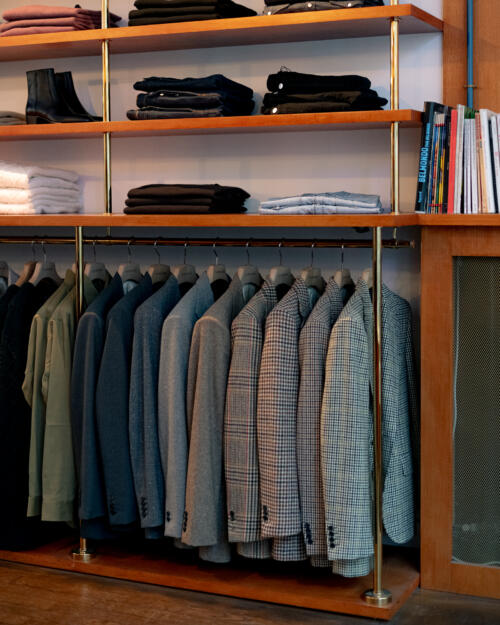
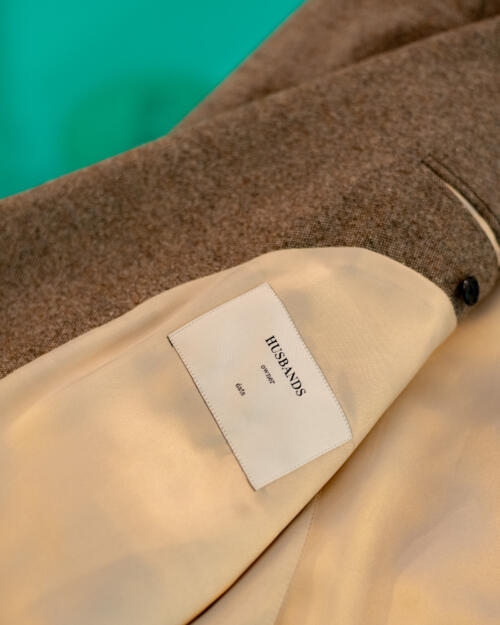
I had assumed the store was a straightforward expansion, but it has a different spin to the original, focusing on ready-made clothing. “It’s somewhere for that local customer to just stop in and buy,” Nicolas told us. “The original store is more of a destination, for MTM and MTO. People come here knowing what they want.”
It’s a good example of how the Husbands evolution hasn’t always been in a straight line. It started with ready-to-wear tailoring, stopped for a few years, and then started up again in 2019 when there was more of a focus online.
Until the new shop, expansion had largely been through wholesale, something that was obvious when we toured the offices upstairs. The little white-walled warren contained the rest of the staff, racks of samples, and several mood boards for future seasons. Samples on display included robes and leather jackets.
“I’m not sure we’ll expand with wholesale forever though,” commented Nicolas. “It too has its pressures and problems.”
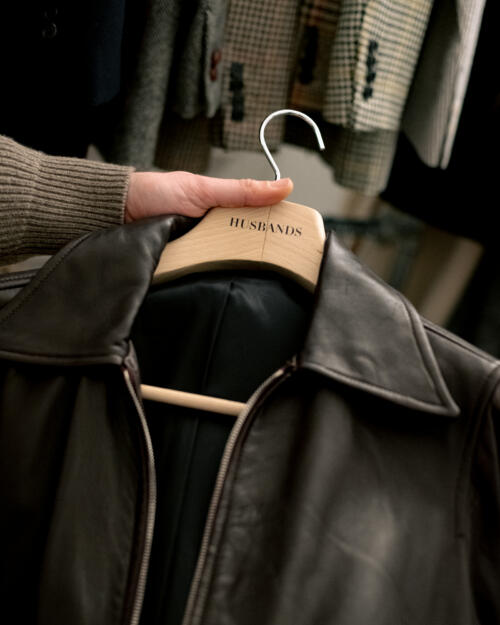
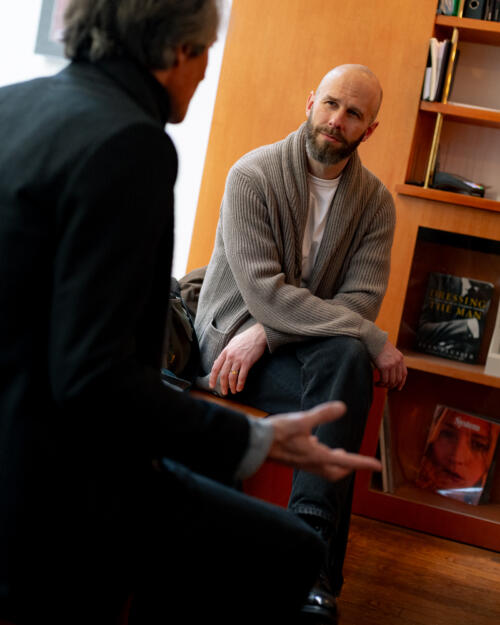
Nicolas isn’t keen on being the face of Husbands and rarely allows his photo to be taken, despite looking amazing in the clothes. But he is intelligent, warm and honest, so talking to him is always interesting.
“When I started I wanted to show that tailoring could be exciting, could be sexy,” he says. “And I think I’ve done that, which is pleasing.
“We did it in two ways I think. One was showing people that there was greater value in our clothes than with designers, and still a really interesting style. We showed people what makes great fabric, by doing it in detail, in person.
“The other thing was talk about how much tailoring is a means of expression. It’s not about a designer brand telling you how to dress – that’s so boring. You can walk into Gucci, spend 10,000 and look like a clone. Much better is to use the blank slate of a suit to show what you can do, to show who you are.”
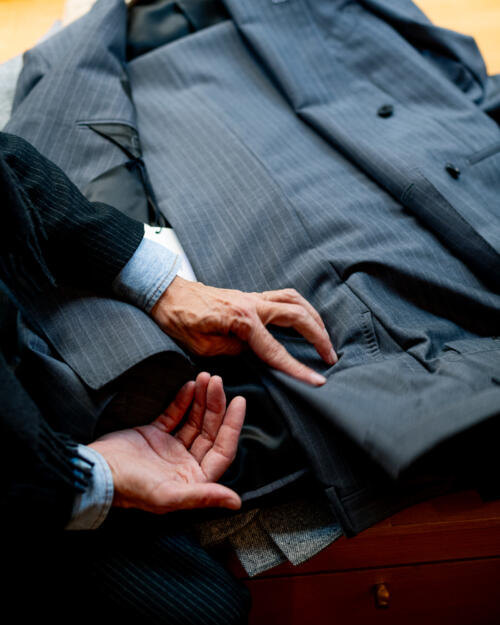
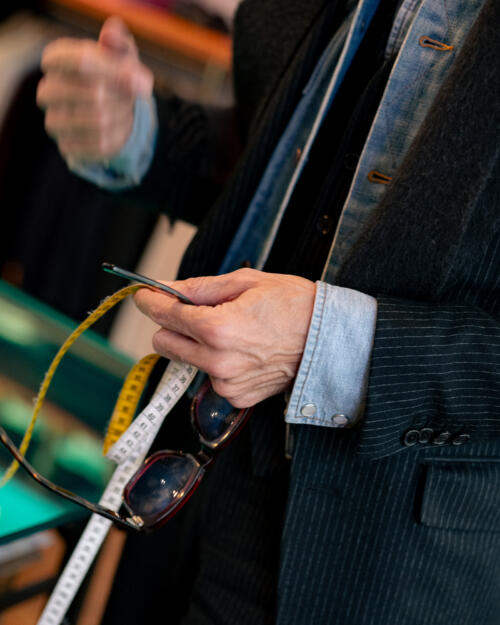
One thing Nicolas is particularly good at is putting classic clothes in less-expected combinations, often removing their associations in the process: a tweed jacket with a flared jean perhaps, or a tattersall shirt under a leather jacket.
These kinds of looks remind you how much the problem with classic menswear is rarely the materials, but the way they’re put together. Some of the tattersall shirts could be straight from a traditional shop like Cordings, but they feel very different at Husbands.
Nicolas and his staff often do this with clothes in the shop, putting combinations together as you talk. At the moment they’re doing a double-breasted tweed jacket with a notch lapel, for example (below), that looks quite classic with a straight grey trouser. But as we were chatting Nicolas mentioned how much he likes it with their really wide-leg (28 inch) style. Suddenly the look was much more striking, very 1930s.
“We’re always pushing and pulling people in different directions,” says Nicolas. “Our trousers have become wider over the years – when you were here last our classic had a 19-inch opening, now it’s 22. We’re also experimenting an ultra-long point-collar shirt.
“But at the same time, we’re doing navy suits again because we want to remind people that we can. And a navy suit is so hard to do well – there’s nowhere to hide, no eye-catching design or details.”
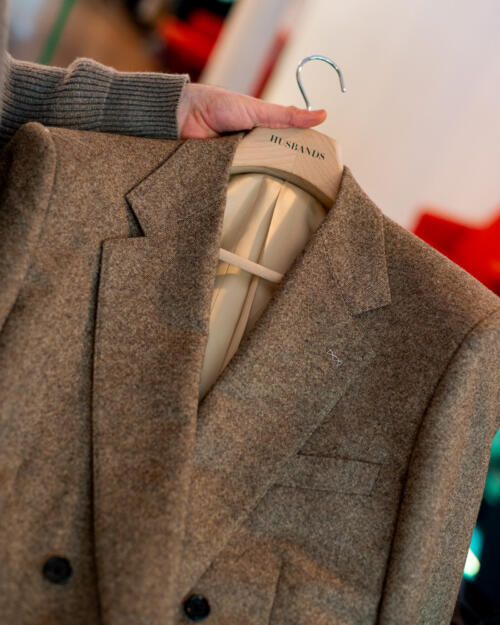
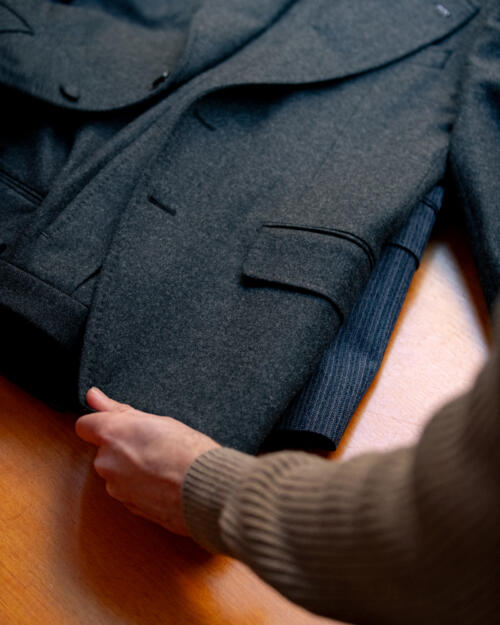
Nicolas is selling himself a little short there, because there’s always something going on with a Husbands suit, no matter how plain it might seem.
For instance, he’s been doing quite a lot of fabric development with Lovat Mill in Scotland. “We’ve been creating these tweedy wools but with a dry handle, sometimes with little micro-stripes like you might have seen in the 1960s,” he says. “And our own flannels – I love Fox, but I wanted something between their weights and with that same really dry hand.”
That charcoal flannel (above) is also a reminder of why Husbands is worth a look for even conservative dressers, because there are always interesting, subtler pieces in the collection. I picked up a western shirt, for example, that is pretty standard save for a longer collar – which isn’t even very long, just longer than the skimpy things most brands are doing.
Then there’s a Loden coat (below) which does something similar – like the classic style but with a slightly bigger collar, slightly better/heavier material, and a slightly more flared silhouette.
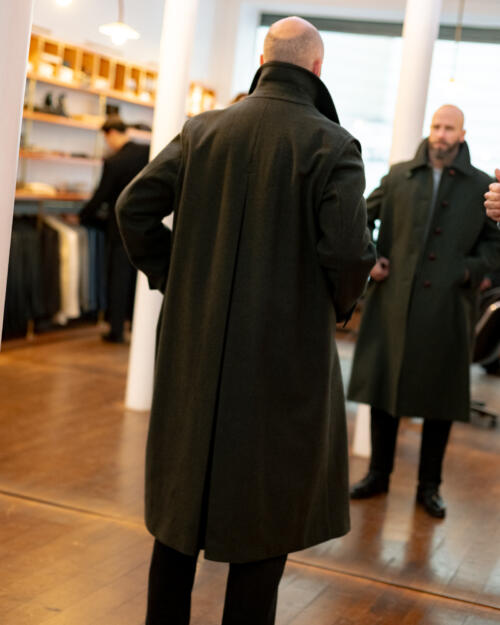
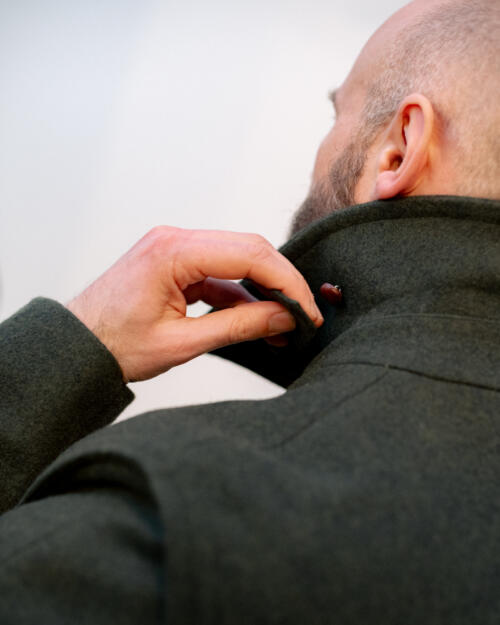
It was lovely to have the chance to catch up with Nicolas, both from a customer point of view and an industry one.
The brand started in such a similar way to others we cover – one man who couldn’t find clothes he wanted to wear – but has developed in different directions, a bit more fashion, a bit more mainstream, yet stayed true to its style and its production.
Here’s wishing Nicolas and the team more of the same over the next 12 years.
husbands-paris.com
For further reading, this piece on Matches is nice, written by some of the staff on their tailoring style.
